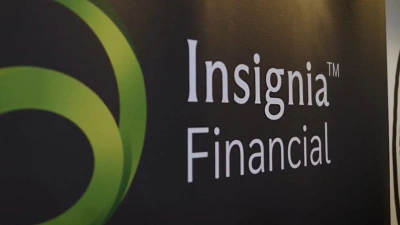Managing a meltdown
If one event has defined the financial services industry in 2007, it has been the US sub-prime crisis.
By definition, therefore, three men stand out as being the most influential players — the two men who currently have their hands on the key liquidity levers, US Federal Reserve chairman Ben Bernanke and European Central Bank (ECB) president Jean-Claude Trichet, and the substantial architect of the preceding policy environment, former Federal Reserve chairman Alan Greenspan.
In the thousands of words that have been written during the second half of 2007 relating to the sub-prime meltdown, there have been many descriptors of its impact on global financial markets. Perhaps the best descriptor is ‘viral’.
Why viral? Because the widespread acceptance of the collateralised debt obligations (CDOs) that evolved out of the US sub-prime market has served to infect financial institutions around the globe.
What is more, the initial infection had its genesis on September 11, 2001, and in the corrective action undertaken by Greenspan in the wake of the terrorist attacks to maintain economic momentum by keeping US interest rates low.
This coincided with the evolution of CDOs, a mechanism developed by US banks involving bundling loans and selling them as packages.
In theory, this tactic distributes the risks more broadly, however, it also gave rise to financial institutions issuing progressively riskier loans.
What we have discovered since the middle of the year is that the exposure of financial institutions around the world to these CDOs has been much greater than originally believed, something that has, in turn, given rise to the resignations of some high profile chief executives, not least the chief executive of Citigroup.
Greenspan, for his part, has not blamed the US sub-prime mortgage market itself for the crisis, but rather the securitisation processes followed by the banks.
That is of little consolation to his successor Ben Bernanke, who, with ECB president Trichet, has been forced to make key decisions relating to both interest rates and the injection of liquidity into the markets.
Bernanke in late October oversaw a further reduction in US interest rates, while in early November Trichet was expected to at least leave Eurozone interest rates on hold at 4 per cent.
To date, the obvious fall-out in Australia has been minimal, with the most notable casualty of the sub-prime crisis and the consequent tightening in liquidity having been funds manager Basis Capital, which placed its funds into liquidation.
While Basis remains the only significant player to tank, most industry players believe the sub-prime crisis will impact the financial services industry well into 2008.
— Mike Taylor
Recommended for you
Net cash flow on AMP’s platforms saw a substantial jump in the last quarter to $740 million, while its new digital advice offering boosted flows to superannuation and investment.
Insignia Financial has provided an update on the status of its private equity bidders as an initial six-week due diligence period comes to an end.
A judge has detailed how individuals lent as much as $1.1 million each to former financial adviser Anthony Del Vecchio, only learning when they contacted his employer that nothing had ever been invested.
Having rejected the possibility of an IPO, Mason Stevens’ CEO details why the wealth platform went down the PE route and how it intends to accelerate its growth ambitions in financial advice.














